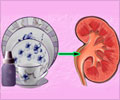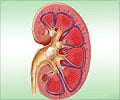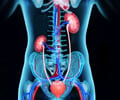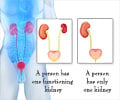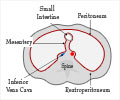
Poor kidney function puts people at risk for upper GI bleeding, which occurs in the esophagus, stomach, or first part of the intestine. Kidney failure patients on dialysis are particularly prone to developing the condition, which can lead to serious complications.
To determine how common upper GI bleeding is in patients with kidney failure and to see how it affects their health, Ju-Yeh Yang, MD (Stanford University School of Medicine and Far Eastern Memorial Hospital, in New Taipei City, Taiwan), Wolfgang Winkelmayer, MD, ScD (Stanford University School of Medicine) and their colleagues analyzed data from 948,345 patient files in the US Renal Data System, which compiles information on the vast majority of dialysis patients in the United States. "In the general population, the incidence of, and mortality associated with, upper GI bleeding has been declining over time. It is unknown, however, whether the kidney failure population has experienced similar changes in rates or complications of upper GI bleeding and its outcomes," said Dr. Winkelmayer.
Among the major findings:
- The rates for upper GI bleeding were 57 and 328 episodes per 1,000 kidney failure patients per year according to stringent and lenient definitions of upper GI bleeding, respectively. This is more than 10 times higher than in the general population.
- Overall, 11.8% of kidney failure patients died within a month of bleeding, although the 30-day mortality rate declined significantly over time. (Mortality declined from 12.3% in 1998 to 10.5% in 2007 according to the stringent criterion and from 10.2% to 8.1% according to the lenient criterion.)
These findings indicate that, in contrast to trends in the general population toward lower rates of upper GI bleeding, rates among patients undergoing dialysis have not changed considerably between 1998 and 2007. Although 30-day mortality rates related to upper GI bleeding declined-perhaps due to improvements in medical care-the negative effects of upper GI bleeding on kidney failure patients remains substantial.
Study co-authors include Tsung-Chun Lee, MD (National Taiwan University Hospital and National Taiwan University College of Medicine, in Taipei, Taiwan); Maria Montez-Rath, PhD, Jane Paik, PhD, Glenn Chertow, MD, and Manisha Desai, PhD (Stanford University School of Medicine).
Advertisement
The article, entitled "Trends in Acute Nonvariceal Upper Gastrointestinal Bleeding in Dialysis Patients," will appear online at http://jasn.asnjournals.org/ on January 19, 2012, doi: 10.1681/ASN.2011070658.
Advertisement
Founded in 1966, and with more than 13,500 members, the American Society of Nephrology (ASN) leads the fight against kidney disease by educating health professionals, sharing new knowledge, advancing research, and advocating the highest quality care for patients.
# # #
Source-Newswise

